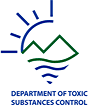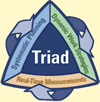Contact Pacific Southwest Waste Program
Pacific Southwest, Region 9
Serving: Arizona, California, Hawaii, Nevada, Pacific Islands, Tribal Nations
Land Revitalization in California
Partnership Supports Cleanup and Reuse of Land

For more information about the Johnson Controls site, contact: John Geroch, DTSC at (714) 484-5350.
For more information about Triad, contact Kathy Baylor, EPA Pacific Southwest Region at (415) 972-3351
The California Department of Toxic Substances Control (DTSC) committed to rapid investigation and cleanup of a Fullerton, California site, and delivered on its promise.
DTSC and EPA assisted a lead acid-battery manufacturer, Johnson Controls Inc.,
in conducting a site investigation and completing environmental remediation in an unprecedented 14 months. EPA provided technical support on the Triad ![]() cleanup process to DTSC.
cleanup process to DTSC.
Johnson Controls needed to address residual contamination from its 44 years of operation prior to turning the property over to the new owner, Lowe Enterprises Real Estate Group.
Triad Speeds
Revitalization
Historically, sites have been cleaned up using a relatively standard approach, developed to address the most hazardous sites. This approach usually did not consider the ultimate end use of a property, and could be both costly and lengthy. More recently, regulators and site managers have seen the value of a more dynamic approach to site cleanup that is flexible, recognizes site-specific decisions and data needs, and improves decision certainty while reducing time and expense. The Triad approach meets these needs, allowing cleanup requirements to adapt to the shifting demands and unforeseen risks posed by real estate development and finance.
The Triad has been implemented successfully as part of characterization and remediation activities throughout the nation, addressing a broad range of contaminants at federal and private sites.

Artist rendering of proposed development, from Lowe Enterprises

Batteries manufactured at the former Johnson Controls plant

Johnson Controls site
Lowe Enterprises purchased the 15-acre facility in January 2006, and will redevelop it into approximately 290,000 square feet of commercial office and warehouse space. Johnson Controls manufactured lead acid batteries at its Fullerton site from 1962 to 2006. The facility operated a hazardous waste water treatment unit under permit by rule authorization. Under the terms of the sale, Johnson was required to close the wastewater treatment plant and investigate and clean up any contamination.
Recognizing that imminent redevelopment required intense cooperation and rapid decision-making, DTSC recommended using the Triad approach for the site. Triad refers to three primary components: systematic planning, dynamic work strategies, and real-time measurement systems. Incorporating these components helps stakeholders to manage decision uncertainty, thereby accelerating and improving the cleanup process. DTSC sought to formally test Triad on a relatively complex site, and later to use these methods on other corrective action sites to streamline its process. DTSC partnered with the United States Environmental Protection Agency and the United States Army Corps of Engineers to implement the Triad approach.
Here are examples of how the primary Triad elements – systemic planning, dynamic work strategies, real-time measurement systems — were used:
- Johnson Controls and DTSC convened to develop a work plan together. Passing workplans back and forth for revisions and approvals was avoided.
- DTSC advised Johnson Controls on anticipated needs for figures and cross-sections needed to be drawn, so the company could continue the investigation without seeking iterative state approvals.
- When soil gas sampling revealed the presence of VOCs in onsite subsurface soils, the project team reviewed draft electronic copies of the investigation data and modified the ongoing field work through conference calls, allowing the investigation to continue uninterrupted.
- DTSC outlined the specific format for the corrective measures proposal (text, tables, figures, photos), for easier review and approval. State staff reviewed portions of the proposal during the drafting process; when a final draft was submitted, the Department accepted it for release to the public for review and comment.
On March 19, 2007, DTSC approved the final site remedy, including soil excavation, treatment and offsite disposal, and soil vapor extraction to remediate volatile organic compound contaminated soils. Further, a land use agreement will ensure the land will only be used for commercial and industrial activities in the future.
Working together through the Triad approach allowed DTSC and Johnson Controls to complete the investigation and select a final remedy in 14 months. Implementing the streamlined process reduced the average project schedule by about two years.
"It’s clear that investing our efforts up front can save everyone time and money,” said Maureen Gorsen, Director of DTSC. “We hope to use Triad at more sites in the future.”

